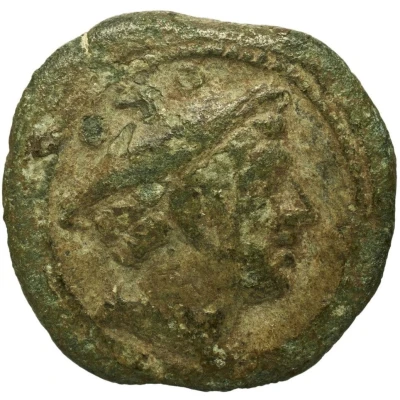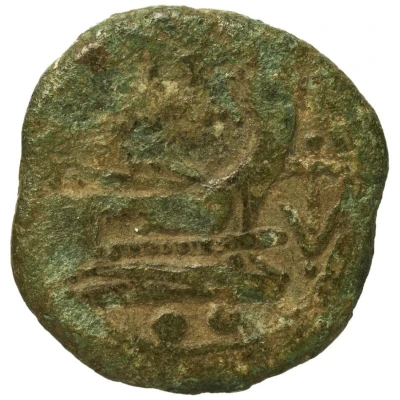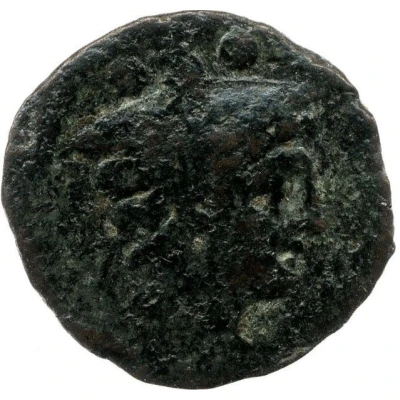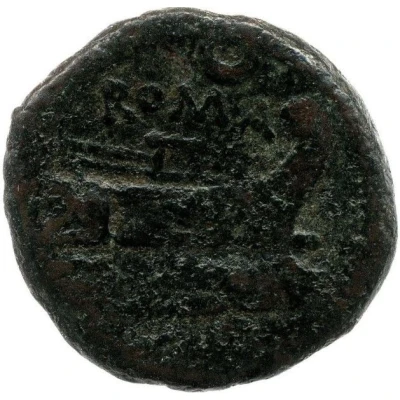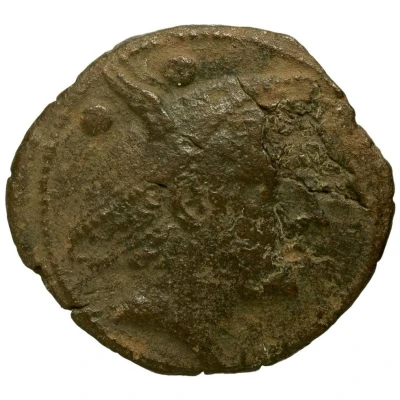
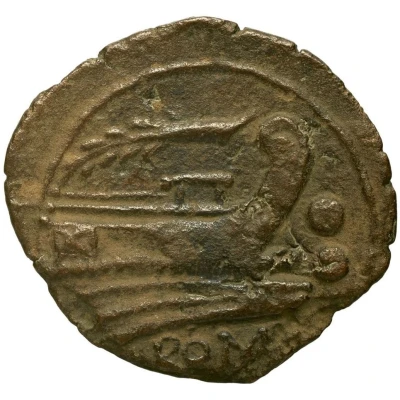

© Bibliothèque nationale de France / Gallica
Sextans Branch; ROMA 209 BC - 208 BC
| Bronze | 2.91 g | 21.7 mm |
| Issuer | Rome › Roman Republic (509 BC - 27 BC) |
|---|---|
| Period | Republic (509 BC - 27 BC) |
| Type | Standard circulation coin |
| Years | 209 BC - 208 BC |
| Value | Sextans (1⁄60) |
| Currency | Denarius of 10 Asses (221 – 141 BC) |
| Composition | Bronze |
| Weight | 2.91 g |
| Diameter | 21.7 mm |
| Shape | Round (irregular) |
| Technique | Hammered |
| Orientation | Variable alignment ↺ |
| Demonetized | Yes |
| Updated | 2024-10-06 |
| Numista | N#386385 |
|---|---|
| Rarity index | 100% |
Reverse
Prow, right. Before, denomninational mark. Above, mark.
Script: Latin
Lettering:
●●
ROMA
Translation: Rome
Comment
Weight varies from 2.91g-4.67gInteresting fact
The Sextans coin was part of a series of coins issued during the Roman Republic that featured the bust of a Roman goddess on one side and a mythological scene on the other. In this case, the Sextans features the bust of Roma, the goddess of Rome, on one side and a scene of a man fighting a wild animal on the other. This coin was issued during the reign of Consul Marcus Porcius Cato, who was known for his military victories and his efforts to reform the Roman currency. Despite its age, the Sextans is still considered a common coin among collectors and is often found in good condition due to its bronze composition.
